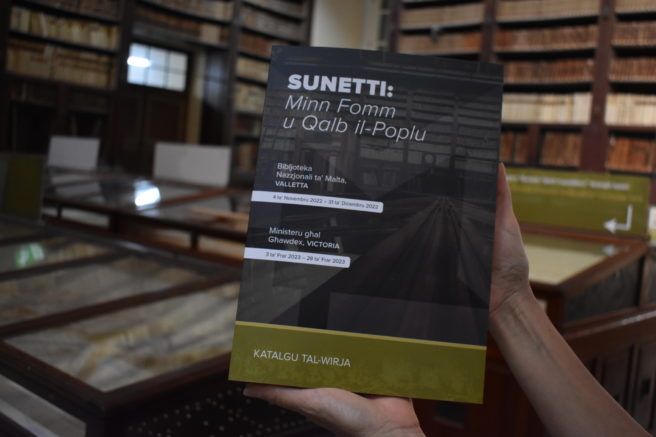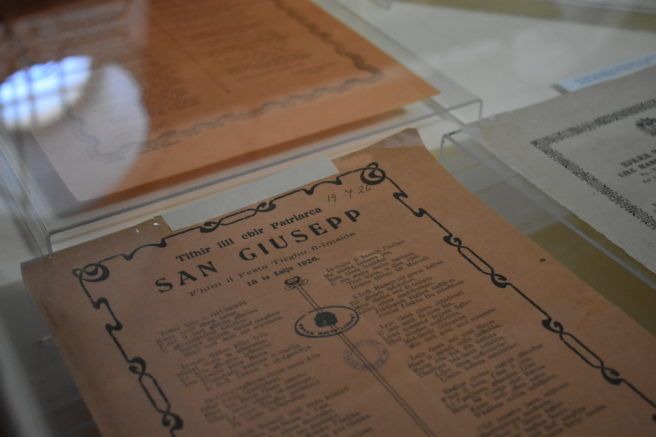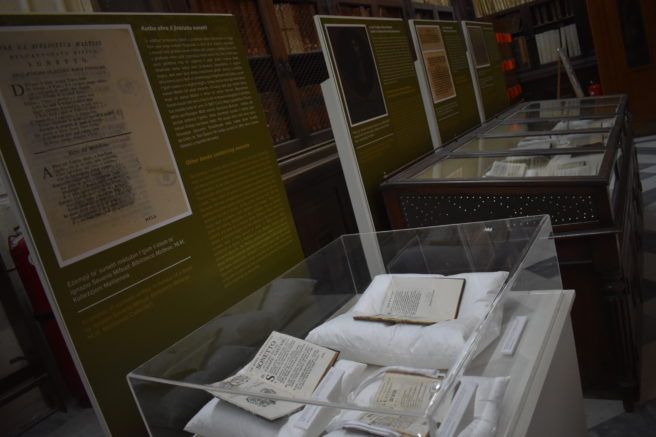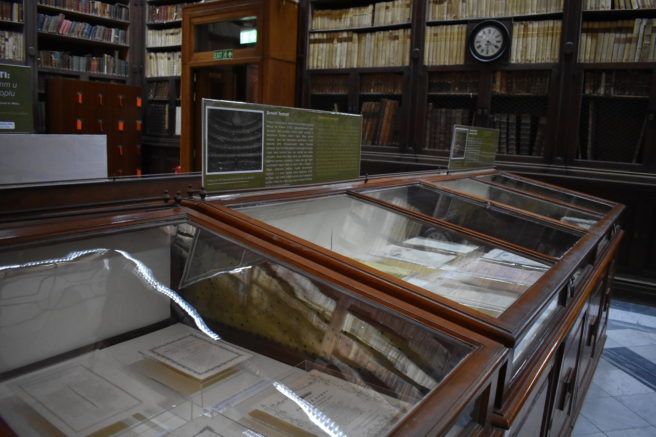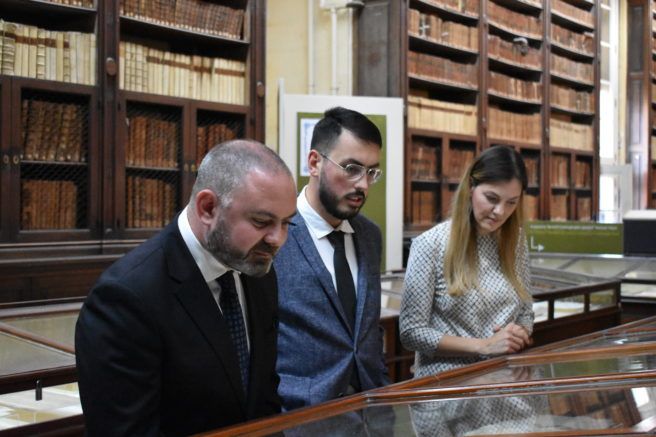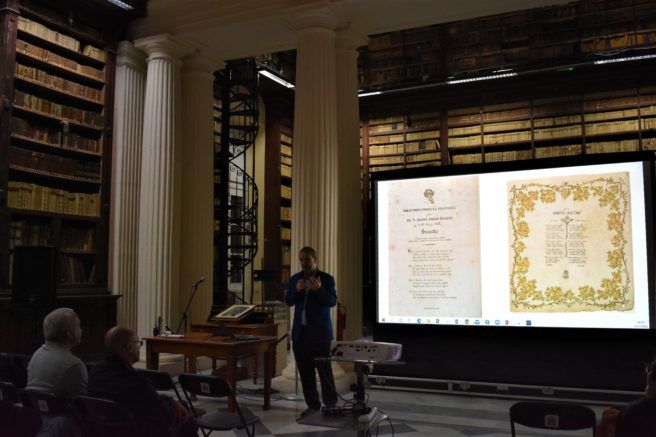Malta Libraries is proud to be presenting an exhibition on the subject of ‘Sunetti’. For this occasion, the National Libraries of Malta and of Gozo have joined forces to display a large number of exemplars of sonnets – about 200 in all – from their respective collections. The exhibition will be mounted in the Reading Room of the National Library of Malta between 4th November and 31st December 2022 and will be transferred to the Ministry for Gozo, Victoria, between 3rd and 28th February 2023.
“Sunetti” or “Sonnets” are most often understood to be those distinctive fourteen-line poems, most notably those known as “Petrarchan” and “Shakespearean”. In the Maltese islands the term started being applied to printed verses written in praise of the patron saint of the parish which were thrown from church roofs onto the congregation below during the village feasts. With the increase in popularity of the feasts in the mid-19th century, many literary works began to be written in the form of poems in honour of the saints and printed on papers known as ‘volanti’. Very often the verses did not have the proper poetic structure of a sonnet but were still known as such. The poems were usually printed on very fine, coloured and highly decorative paper. Sometimes they were also printed on silk. Eventually, even the small bits of cut paper that largely replaced the printed poems, which are also thrown from roofs during a feast, became known as “sunetti”.
Until 1642 there was still no printing press in Malta and it was thanks to Grand Master Lascaris that the first printing press was opened in the Order’s bakery in Valletta. One of the earliest books printed in Malta – Geronimo Marulli’s I Natali delle Religiose Militie de’ Cavalieri Spedalieri, e Templari, e della Religione del Tempio l’ultima roina (1643) – included a sonnet. Such dedicatory verses were also written on the occasion of the Calendimaggio, or the eve of the 1st of May, a feast in honour of the Grand Master which was celebrated in St George’s Square, Valletta. The celebration was inspired by the Arcadian movement which aspired to return to the idyllic pastoral paradise, and the content of the cantata was inspired by classical Greek and Roman mythology.
Other poems were written to celebrate important national events such as the Great Siege of 1565, or prominent persons in the political, religious or cultural fields. Some of the poems were works of considerable literary value. One such example was a sonnet dedicated to Christ the King penned by the national poet, Dun Karm Psaila, in 1926. Sonnets frequently had political and satirical themes, reflecting the political situation in 19th-century Malta under British rule. Others were written in praise of eminent opera singers or theatre divas, as was Elena Bianchini who graced the Manoel Theatre with her performances in the 19th century.
Last but not least, sonnets were written to celebrate special events both on a private level, such as marriages or priestly ordinations, or on a national scale. The latter included the election of the Grand Master, the arrival of a new Governor, the installation of a new Bishop or the visit of a prominent personality to Malta. The writing of a sonnet was an ideal way of preserving the memory of such significant events for posterity.
This bi-part exhibition aims to bring these oft overlooked items of significant cultural value to the general public’s attention. Throughout the curatorial process, it became evident that many were not even aware of this literary practice, whilst others came forward with niche collections of their own. Malta Libraries’ aim is to bridge this gap and offer the public an opportunity to discover a cultural practice they may never have come across or scarcely remember.
